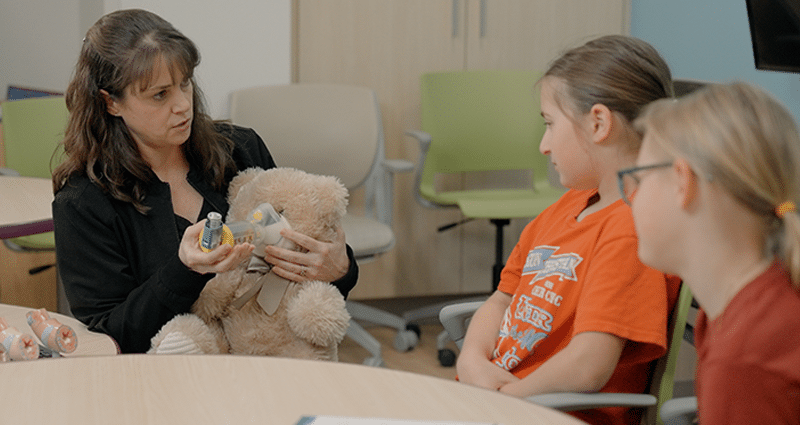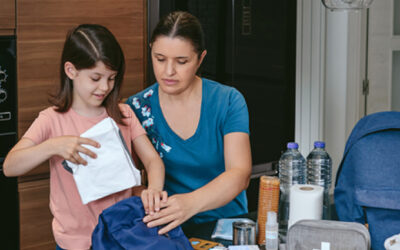Using an asthma inhaler for the first time? Or just need a refresher on the proper way to help your child use their inhaler?
Tracy Marquette, RRT-AE-C, respiratory therapist and asthma educator with Our Lady of the Lake Children’s Health, shares how to use an asthma inhaler correctly and explains the importance of using a spacer when taking asthma medication with an inhaler.
Understanding Asthma Symptoms
Asthma causes three things that make it hard to breathe:
- Asthma causes swelling that is there on a daily basis, even when the patient is not sick
- Asthma creates increased mucus production
- Asthma causes the muscles around the breathing tube to pinch, causing the wheezing noise
Asthma symptoms parents should look for include coughing often at night, fast breathing and noisy breathing. Another symptom can be your child’s chest caving in while breathing: the chest will appear to sink in just below the neck or under the breastbone with each breath.
Types of Inhalers
There are two types of inhalers: quick relief or rescue med, which is albuterol, and controller meds. Albuterol relaxes the muscles around the breathing tube.
The controller meds control the swelling that that child has inside the lung, even when they’re not sick. Controller medications should be taken as prescribed even if the child is not experiencing symptoms.
How to Use an Inhaler
When you get an inhaler, shake it for 10 seconds before each use. Prime it before first use by pressing it in the air four times, and prime. the inhaler again between uses if you haven’t used it for two weeks or more.
Always use a spacer with your child’s inhaler. Children younger than 9 need to use an inhaler with a spacer and mask, which fits over the mouth and nose. It helps make sure all the medicine gets into your child’s lungs. Children older than 9 can use a mouthpiece spacer.
When ready to administer medication to a younger child using an inhaler with a spacer and mask, press the inhaler and let the child take six breaths on one puff. After the six breaths, wait 30 seconds before dispersing the next puff, if a second is prescribed.
For older children who use a mouthpiece, after the canister is primed the child will put the spacer in their mouth and make sure their teeth and tongue are out of the way. The child then bites on the spacer, making a tight seal with their lips, blows out into it, presses and inhales slowly and smoothly. The child will hold their breath and count to 10, allowing the medicine to settle in the lungs. Wait 30 seconds before the next puff if prescribed.
Each breath should be a slow, deep breath. If a “whistle sound” is heard, that’s an indicator to slow down the breath.
What Else Parents Should Know About Asthma
Asthma is a chronic condition, which means it’s there every day, even when the child is not sick. It’s very important for families to regularly stay in touch with their doctor and healthcare team.
Download Our Lady of the Lake Children’s Health asthma education handbook to learn more about managing your child’s asthma diagnosis. Learn more about the asthma education classes and summer camp available in Baton Rouge.




